StarTeam Terminology
Each StarTeam Server runs a server configuration that specifies where and how your files are stored. The following sections provide an overview of the project structure controlled by an instance of the StarTeam Server.
Repositories
The StarTeam Server, running a server configuration, can manage any number of StarTeam projects that use the same repository. A repository consists of a database to store project information and a vault that contains the hives in which archive files are stored.
Servers and Projects
A project is a container that allows files to be grouped according to the purpose they serve. For example, a project may include all files related to a software application created by your company or all files related to a component of that software application.
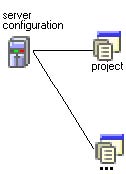
Views
Each project has one root (or main) view and any number of child views.
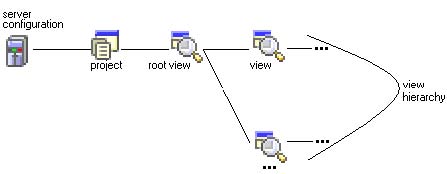
An administrator will create child views to:
- Provide access to a subset of the files in a project. For example, a developer may not need to be aware of files stored in that project for marketing purposes and a market researcher may not need to be aware of the source code files. They can both work on the same project, but in different views, each of which is a subset of the root view. Such views are called reference views.
- Provide branches for the project. For example, suppose the root view of a project stores source code for Release 1.0 of a software application. After the application is released, assume that work on Release 2.0 continues in the root view. In this situation, it may be desirable to create an additional view for a maintenance release, such as Release 1.0 Service Pack 1. Branching views enable development teams to work on files with the same names but different code or content. The application enables you to merge such files when required.
Folders
The root view and the child views each have a single folder as a root folder.
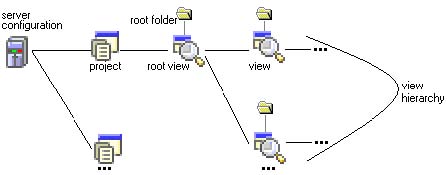
A root folder can have a hierarchy of child folders, which is called the StarTeam folder hierarchy.
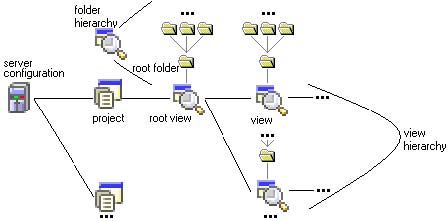
When you create a StarTeam project, its root view and root folder are created automatically and given the same name as the project. For example, if the project name is Great App, the root view name is initially Great App, and the root folder name is initially Great App. If you have the correct access rights, you can change any of these names using the application.
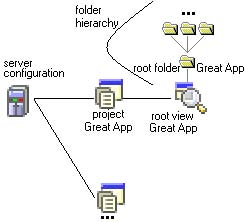
Working Folders
Each application folder has a corresponding working folder. The working folder is the location to which files are checked out onto your workstation. The path to the working folder may have little or no correlation to the path to the application folder.
For example, assume that the root folder for a view is Great App, and it has a child folder named Source Code. Great App has the working folder C:\Great App and Source Code has the working folder C:\Great App\Source Code or even E:\VBstuff\sc. The StarTeam folder Source Code may be a child folder of the StarTeam folder named Great App, but its working folder is not necessarily a child folder of the Great App working folder.
In the following figure, the working folders form a hierarchy that is similar to that of the StarTeam folder hierarchy.

However, as the next figure shows, paths to working folders are not necessarily identical to those of the StarTeam folders.

Server Description
Before you can use an instance of StarTeam Server, you must create a server description that identifies that instance. The server description can have a name of your choosing, but it must identify the computer on which the instance is running and the TCP/IP endpoint used for access to that instance.
If your workstation has both the StarTeam Cross-Platform Client and the StarTeam Microsoft SCC Integration installed, both applications must use the same server description for the same instance of the server. After the server description has been defined by either application, both can use it.